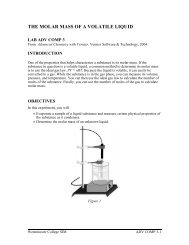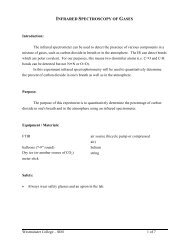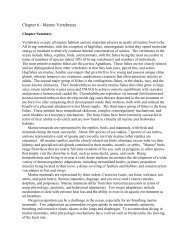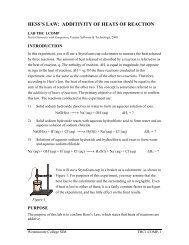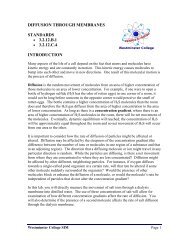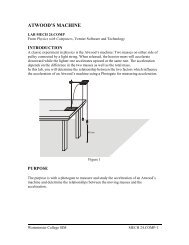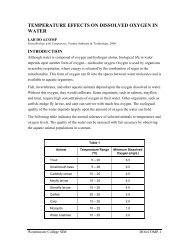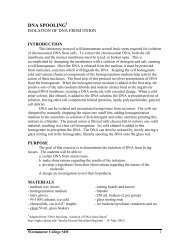Endothermic and Exothermic Reactions - Westminster College
Endothermic and Exothermic Reactions - Westminster College
Endothermic and Exothermic Reactions - Westminster College
- No tags were found...
You also want an ePaper? Increase the reach of your titles
YUMPU automatically turns print PDFs into web optimized ePapers that Google loves.
<strong>Endothermic</strong> <strong>and</strong> Extothermic <strong>Reactions</strong>b. Label both curves by choosing Make Annotation from the Analyze menu, <strong>and</strong>typing “<strong>Endothermic</strong>” (or “<strong>Exothermic</strong>”) in the edit box. Then drag each box to aposition near its respective curve.c. Print a copy of the Graph window. Enter your name(s) <strong>and</strong> the number of copies ofthe graph you want.15. Save the temperature <strong>and</strong> time data from both data runs. Choose Save As from theFile menu <strong>and</strong> give the file a distinct name. As directed by your teacher, choose alocation for the file, <strong>and</strong> click OK .DATA TABLEPart IPart IIFinal temperature, t 2 °C °CInitial temperature, t 1 °C °CTemperature change, Δt °C °COBSERVATIONSPROCESSING THE DATA1. Calculate the temperature change, Δt, for each reaction by subtracting the initialtemperature, t 1 , from the final temperature, t 2 (Δt = t 2 – t 1 ).2. Tell which reaction is exothermic. Explain.3. Which reaction had a negative Δt value? Is the reaction endothermic or exothermic?Explain.4. For each reaction, describe three ways you could tell a chemical reaction was takingplace.5. Which reaction took place at a greater rate? Explain your answer.<strong>Westminster</strong> <strong>College</strong> SIM Page 4




